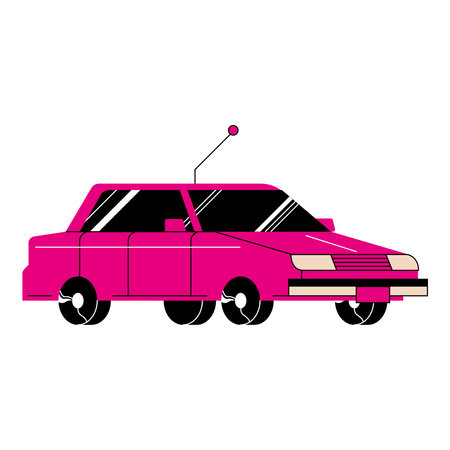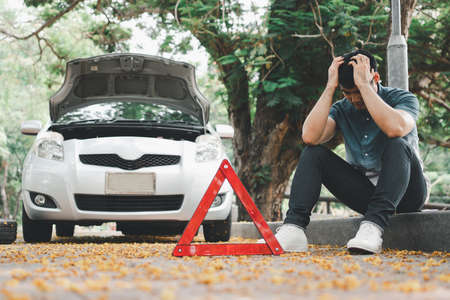Introduction to Uninsured/Underinsured Motorist Coverage
Uninsured/Underinsured Motorist (UM/UIM) coverage is a crucial part of auto insurance for anyone driving on American roads. While most states require drivers to carry liability insurance, not everyone complies. In fact, according to the Insurance Research Council, about 1 in 8 drivers in the U.S. are uninsured. This means if you’re hit by someone who doesn’t have enough—or any—insurance, you could be left paying for your own injuries and damages out of pocket. UM/UIM coverage steps in when the at-fault driver cannot cover your losses. For example, imagine you’re rear-ended at a stoplight by an uninsured driver. Your medical bills, lost wages, and car repairs could quickly add up to tens of thousands of dollars. Without UM/UIM coverage, your only recourse may be to sue the other driver—which is often futile if they have no assets. On the other hand, having robust UM/UIM protection can make all the difference: it covers you and your passengers when the other party cannot. This coverage doesn’t just apply to accidents involving cars—it can also protect you as a pedestrian or cyclist hit by an uninsured or underinsured motorist. Ultimately, UM/UIM coverage is designed to ensure that responsible drivers aren’t left financially devastated by someone else’s lack of insurance.
Health Insurance vs. Auto Insurance: Who Pays First?
If you’re injured in a car accident, understanding who pays your medical bills first—your health insurance or your auto insurance—can get confusing fast, especially when uninsured/underinsured motorist (UM/UIM) coverage is involved. In the U.S., the rules about which insurer pays first are called “primary and secondary payer rules.” Knowing how these rules work can help you avoid denied claims and unexpected out-of-pocket costs.
Primary and Secondary Payer Rules
Generally, if you have auto insurance with Medical Payments (MedPay) or Personal Injury Protection (PIP), those will pay for your medical expenses before your health insurance does. If you don’t have MedPay or PIP, or if those limits are exhausted, then your health insurance typically steps in as the secondary payer. If the at-fault driver is uninsured or underinsured and you have UM/UIM coverage, that coverage may also pay for your injuries after other available coverages are used up.
Coordination of Benefits: How It Works
The process where insurers decide who pays first is called coordination of benefits (COB). Here’s a basic breakdown:
| Type of Insurance | Pays First? | Notes |
|---|---|---|
| Auto Insurance (PIP/MedPay) | Yes | Pays up to policy limits; required in some states |
| Health Insurance | No, unless PIP/MedPay is exhausted or unavailable | Might require subrogation rights (repayment from any settlement) |
| Uninsured/Underinsured Motorist Coverage (UM/UIM) | After PIP/MedPay & Health Insurance | Pays if the at-fault driver’s insurance is insufficient or nonexistent |
Typical Scenario After an Accident
If you’re hit by an uninsured driver and suffer injuries, your MedPay or PIP pays first. Once those benefits are maxed out, your health insurance covers additional costs, but they may seek reimbursement if you later recover damages from a UM/UIM claim. If both your MedPay/PIP and health insurance limits are reached—or if certain treatments aren’t covered—your UM/UIM bodily injury coverage can kick in to cover the remaining losses, including medical bills and sometimes lost wages.
Always check your policy details and state laws. Misunderstanding primary versus secondary payers can lead to denied claims or delays. For example, submitting bills to the wrong insurer first can result in lengthy appeals or outright refusal to pay. To avoid these pitfalls, coordinate with both your auto and health insurers immediately after an accident.

3. How UM/UIM Interacts with Liability Insurance
Understanding how Uninsured/Underinsured Motorist (UM/UIM) coverage interacts with liability insurance can help you avoid common coverage gaps and denied claims. Here’s how these coverages work together—and where their responsibilities begin and end—in the context of an accident in the U.S.
Clarifying Coverage Overlaps
First, liability insurance pays for injuries or damages you cause to others when you’re at fault in an accident. This is the policy every driver is required to carry in most states. However, if you’re injured by another driver who has little or no insurance, that’s where your own UM/UIM coverage comes into play. There’s often confusion about whether your liability insurance will cover your own injuries or property damage in such scenarios—it won’t. That’s a job for UM/UIM.
Where Liability Insurance Stops
Your liability policy stops at covering injuries and damages you cause to someone else. If you’re hit by an uninsured or underinsured driver, your standard liability policy does not provide compensation for your own losses. Many drivers mistakenly assume “full coverage” means all situations are covered, but without UM/UIM, you could be left paying out of pocket for medical bills, lost wages, and car repairs if the at-fault driver can’t pay.
Where UM/UIM Steps In
UM/UIM picks up the slack when the other driver lacks sufficient coverage. For example, if you suffer $50,000 in injuries but the at-fault driver only has a $25,000 policy limit—or worse, no insurance at all—your UM/UIM will cover the remaining losses up to your policy limits. Be aware: Insurers may scrutinize these claims closely and deny payment if there’s any ambiguity about who was at fault or whether the other party is truly uninsured or underinsured. Always document everything and report promptly to avoid claim denials.
4. Common Scenarios: Real-Life Claims and Coverage Gaps
Understanding how Uninsured/Underinsured Motorist (UM/UIM) coverage interacts with health and liability insurance is best explained through real-world examples. Below are illustrative scenarios that demonstrate not only the benefits but also the common pitfalls policyholders face—especially when claims get denied due to overlooked details.
Scenario 1: Injured by an Uninsured Driver
Situation: Lisa is rear-ended by a driver with no auto insurance. She suffers neck injuries requiring immediate medical care. Lisa has both UM coverage on her auto policy and comprehensive health insurance.
| Coverage Type | What Pays First? | Common Denial Reason |
|---|---|---|
| Health Insurance | Covers emergency room, initial treatments (subject to deductibles/copays) | Treatment not pre-authorized or out-of-network provider |
| UM Coverage | Pays for medical bills and lost wages not covered by health insurance, up to policy limits | No police report or claim filed within required timeframe |
Key Takeaway: Always file a police report and notify your insurer promptly. Failure to do so can lead to denial of your UM claim—even if you have medical bills piling up.
Scenario 2: Hit-and-Run Accident with Underinsured At-Fault Driver
Situation: Mike is hit by a driver who flees the scene. The at-fault driver is later identified but only carries the state minimum liability limits, which are insufficient for Mike’s extensive injuries. Mike has UIM coverage and employer-sponsored health insurance.
| Coverage Type | Order of Payment | Potential Gap/Denial Reason |
|---|---|---|
| At-Fault Driver’s Liability Insurance | Pays first, but quickly exhausted due to low limit ($25,000) | Payout delay if at-fault driver disputes fault or coverage lapses during investigation |
| Health Insurance | Pays for ongoing treatment; may seek reimbursement (subrogation) from settlement later | If accident-related care is not disclosed, claim can be denied for “misrepresentation” |
| UIM Coverage | Covers remaining eligible expenses after liability coverage maxes out; offsets based on what health insurance paid | No prompt cooperation with insurer’s investigation; missing proof of exhaustion of other coverages |
Key Takeaway: To avoid denial, provide clear documentation showing that all other available coverages have been exhausted before tapping into UIM benefits.
Scenario 3: Passenger Injury—Conflicting Policies in Play
Situation: Sarah is a passenger in her friend’s car when they’re struck by an uninsured driver. Sarah has her own health insurance, while her friend carries UM coverage.
- Health Insurance: Sarah’s primary source for immediate medical costs—but will expect reimbursement if she recovers funds from UM claims.
- Friend’s UM Policy: May apply for Sarah as a passenger, but only if policy language allows; some policies exclude non-household members or require written consent to extend coverage.
- Liability Waivers: If Sarah signed any waivers prior to the trip (e.g., rideshare agreements), this could be used as grounds for denial.
Deny Alert: Many insurers deny UM claims for passengers if the policyholder didn’t specifically list them or if there’s ambiguity about their status at the time of the accident.
Main Reasons for Claim Denials Across These Scenarios:
- Lack of timely reporting or missing documentation (police reports, medical records)
- Mistakes in filling out claim forms or failing to cooperate with insurer investigations
- Poor understanding of how subrogation works between health and auto insurers—leading to surprise bills or double-denials
- The “other insurance” clause: If multiple policies could pay, each insurer may argue the other is responsible first, delaying or denying payment altogether.
Your Action Step:
If you’re ever involved in an accident with an uninsured or underinsured motorist, document everything, communicate with both your health and auto insurers quickly, and ask about coordination of benefits up front. Don’t assume your policies will automatically fill every gap—know where denials most commonly occur so you can avoid expensive surprises.
5. Practical Tips and Common Pitfalls
Advice on Filing UM/UIM Claims
If you’re in an accident with an uninsured or underinsured driver, acting quickly is key. Notify your own insurance company as soon as possible, even if the at-fault driver’s insurance status isn’t clear yet. Many policies require prompt notification, and waiting too long can give your insurer grounds to deny your claim. Be detailed and honest when describing the accident and your injuries—any inconsistencies could become red flags later.
Documentation: The Foundation of Your Claim
Strong documentation is your best friend. Gather police reports, photos of the accident scene, medical records, repair estimates, and all correspondence with both your insurer and the other party. Keep a diary of symptoms and treatments. If you have health insurance, submit all bills to them first; then provide copies of what they paid (and what you paid out-of-pocket) to your auto insurer when claiming under UM/UIM coverage. This helps prove what expenses haven’t been reimbursed elsewhere.
Common Reasons for Denials or Reduced Payouts
- Late Notification: Missing deadlines for reporting an accident or submitting paperwork is one of the top reasons claims get denied. Always check your policy’s time limits.
- Lack of Proof: If you can’t prove the other driver was uninsured or underinsured (for example, by getting a letter from their insurer), your claim may be rejected.
- Incomplete Medical Records: Not providing full documentation of injuries and treatments often leads to reduced payouts. Insurers need evidence that your injuries are related to the accident—and that they weren’t pre-existing.
- Settlement Without Consent: Settling with the at-fault driver’s insurer without your own insurer’s written consent can void your UM/UIM claim in many states.
Pro Tips for Maximizing Your Claim
- Request written confirmation from insurers about coverage limits and denials.
- If you use health insurance, clarify which expenses remain unpaid for UM/UIM reimbursement.
- Consult with an attorney if you’re unsure about settlement offers or policy language—especially if large sums are involved.
A Final Word of Caution
The biggest pitfall is assuming your insurer will “take care of it.” In reality, carriers look for ways to limit payouts wherever possible. Stay proactive, organized, and vigilant throughout the process to avoid costly surprises or outright denials.
6. Conclusion: Making Sure Youre Covered
Understanding how uninsured and underinsured motorist coverage works alongside your health and liability insurance isn’t just a nice-to-have—it’s essential for protecting yourself on American roads. Here are some key takeaways to help you optimize your protection and avoid those unpleasant “coverage denied” moments:
Review Your Current Policies Regularly
Insurance policies aren’t set-it-and-forget-it documents. Life changes—new cars, new jobs, or even changes in state law—can impact what you need. Set a reminder to review your auto, health, and liability coverage every year or after major life events. This helps ensure you’re not left with gaps that could cost you big time if an uninsured driver hits you.
Check Coverage Limits and Exclusions
Don’t assume your limits are enough. Medical costs can skyrocket, and liability claims can drain your savings fast. Look at the fine print: Are your UM/UIM limits high enough to realistically cover medical bills, lost wages, and pain and suffering? Does your health insurance leave out accident-related expenses? Knowing these details now is much better than learning them after a crash.
Coordinate Benefits—Don’t Double Count
Your auto, health, and liability policies may interact in ways that affect how much you actually receive after a claim. For example, some states allow insurers to subtract (“offset”) what’s paid by one policy from another. Talk with your agent to make sure you understand how payments will be coordinated so you don’t expect more than you’ll get.
Steps to Avoid Coverage Surprises
- Ask for a “what if?” claim scenario from your agent—see exactly how each policy responds.
- Update beneficiary information and contact details regularly.
- If you drive for work (including rideshare), check for business-use exclusions.
The bottom line: Don’t wait until after an accident to discover where your insurance falls short. Being proactive means reading the fine print, asking tough questions, and choosing coverage that reflects real-world risks—not just minimum legal requirements. Stay informed, stay protected, and keep those claim denials at bay.

